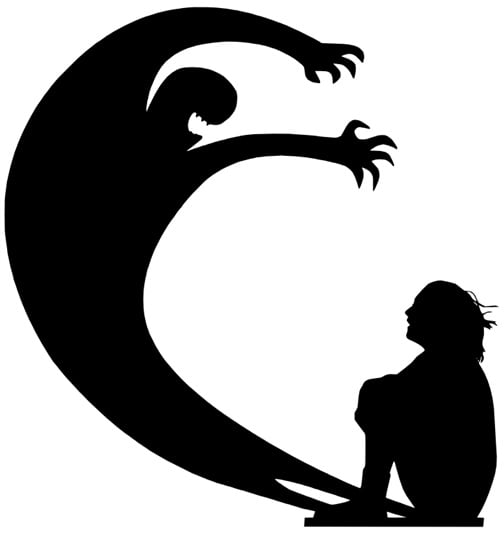Phobias

Phobias
In psychology, a phobia is an irrational fear from a specific object, situation, or activity. People with phobias experience intense anxiety, panic, and distress when they encounter the object or situation that triggers their fear.
Types
Phobias are classified as anxiety disorders and can be divided into three categories:
- Specific phobias: a fear of specific objects or situations, such as heights, spiders, flying, or closed spaces,
- Social phobia: a fear of social situations and being judged by others,
- Agoraphobia: a fear of being in situations where escape might be difficult or help might not be available in the moment of panic attack.

Causes
The main causes are:
- genetics,
- traumatic experiences,
- learned behavior.
Symptoms
The symptoms of phobias can interfere with daily life. They vary depending on the individual and the object or situation triggering the fear. The most common ones include:
- Intense anxiety or panic when exposed to what triggers fear,
- Avoidance of the trigger,
- Sweating,
- Trembling,
- Rapid heart rate,
- Difficulty breathing,
- Nausea,
- Feeling dizzy or fainting,
- Detachment from oneself or reality,
- Feelings of powerlessness or loss of control.
It’s important to note that phobia might also be a symptom of an underlying condition, so a proper diagnosis should be made by a licensed mental health professional.
Treatment
The goal of treatments is to help the person manage their symptoms and learn to cope with their fears. They typically involve cognitive-behavioral therapy (CBT), and medication in some cases to help manage the symptoms. In addition to that, lifestyle changes such as regular exercise, healthy eating, and stress-management techniques also help managing phobias.
Rapid Transformational Therapy (RTT)
RTT is a form of psychotherapy that combines hypnotherapy, cognitive-behavioral therapy, and neurolinguistic programming techniques to help individuals overcome a variety of issues, including phobias. And It follows these steps:
- Identifying the root cause: The therapist will work with the individual to identify the underlying cause of their phobia, often through a combination of hypnotherapy and guided introspection.
- Reframing negative beliefs: Once the root cause has been identified, the therapist will work with the individual to reframe negative beliefs and thought patterns associated with the phobia.
- Hypnotic suggestion: The therapist will use hypnotic suggestion to help the individual visualize and experience their feared object or situation in a safe and comfortable way, helping them to overcome their fear.
- Reinforcement and follow-up: The therapist will provide the individual with reinforcement techniques and tools to use outside of therapy sessions, as well as follow-up sessions to track progress and make any necessary adjustments to the treatment plan.
Subsequently, it’s important to note that only a licensed and experienced therapist who has specific training in RTT does this technique.
Bottomline
Although it can be challenging, it is crucial to treat phobia. With proper treatment, it is possible to acquire skills in handling fear and living peacefully.
Finally, don’t forget to keep your mental health in check. Contact Dr. Carla today.

